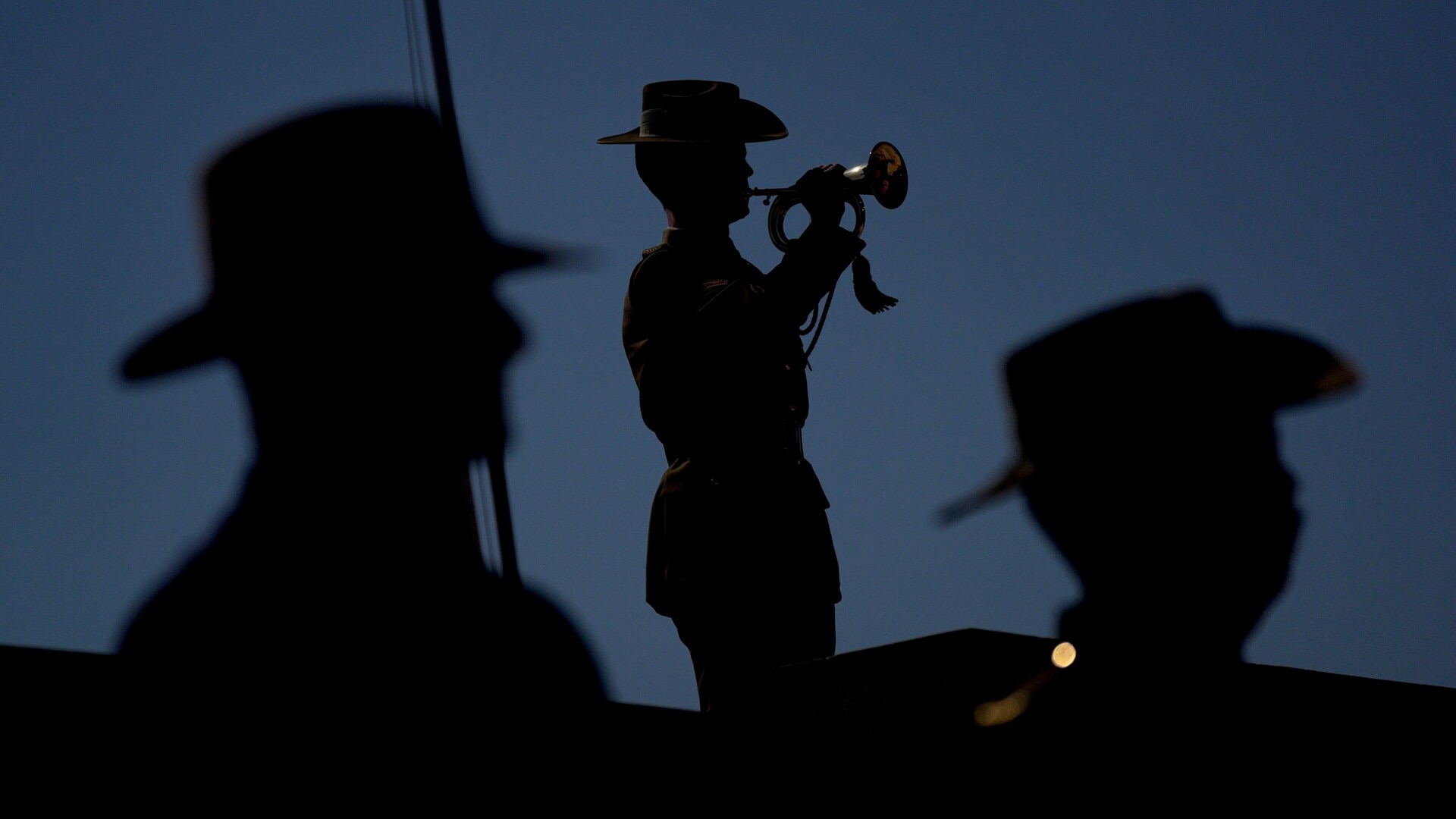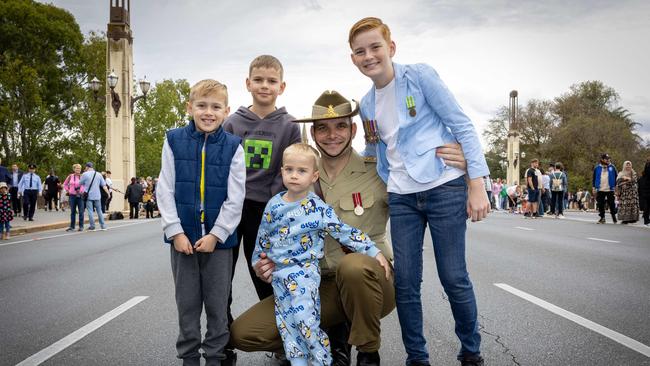
Last Wednesday, the front page of The Daily Telegraph carried the heading “Legend Lost on Gen Z” with the subheading declaring “only 23 per cent of young feel strongly about Anzac Day”.
Turn to page 4 and the news was even more depressing. David Mills wrote that only one in six members of Gen Z (aged between 13 and 28) “would sign up to defend Australia in the event that we were attacked, exclusive new polling has found”.
The findings were in a survey of 1118 Australians conducted by News Corp’s Growth Intelligence Centre. Here Mills reported that “42 per cent of all respondents said that they felt strongly connected to Anzac Day, but the figure dropped to 23 per cent for Gen Z”.
However, there was some good news. Respondents were given the option of saying that “maybe” they would consider fighting, depending on the situation. Here 68 per cent of Gen Z declared they would definitely serve or consider doing so. As Mills pointed out, this was higher than for boomers (born between 1946 and 1964).

All this reminded me of learning of the Oxford Union Society’s King and Country debate in February 1933 when I read English journalist Malcolm Muggeridge’s irreverent history The Thirties: 1930-1940 in Great Britain.
Muggeridge wrote: “The Oxford Union carried a motion favouring a refusal to fight for King and Country if requested to do, and some taking literally a remark of Professor (Albert) Einstein to the effect that if only 4 per cent of humanity were resolute in refusing to go to war, peace would be assured, decided to constitute themselves that 4 per cent, and wore badges indicating the same.” The debate carried the motion “that this House will in no circumstances fight for its King and Country” by 275 to 153 votes. There were three student and two guest speakers. Philosopher CEM Joad and lawyer Quintin Hogg (later a Conservative minister) were the non-students.
When news broke in the London Telegraph, the motion fed into what came to be called appeasement. The Oxford Union Library records that “Joad’s articulate presentation of an absolute pacifist stance was widely acknowledged as crucial in influencing the result”.
That was in 1933. In September 1939, Britain declared war on Nazi Germany following its invasion of Poland. And Joad’s pacifism seemed irrelevant to most British citizens – young and old alike.
There is no evidence that many, if any, of those who voted for or supported the Oxford Union motion declined to do their duty when it became necessary for Britain to stand up to Adolf Hitler and his Nazi regime.
As for pacifists such as Joad, writer George Orwell summed up their predicament when reviewing Hitler’s Mein Kampf on March 21, 1940, in The New English Weekly: “The socialist who finds his children playing with soldiers is usually upset, but he is never able to think of a substitute for the tin soldiers; tin pacifists somehow won’t do.”

If precedent is any guide, it is likely that the overwhelming majority of most Australians, of all cohorts from Gen Z to boomers, would support Australia if it became necessary to go to war to protect the nation. Moreover, it would seem that support for the Australian Defence Force and the Anzac legend is stronger now than it was more than a half-century ago – when Alan Seymour’s play The One Day of The Year was fashionable among the intelligentsia.
As those who have seen the work or read the script, Seymour mocked the returned servicemen (at the time there was little focus on returned servicewomen). This has changed in recent times; witness the decision to name the new federal seat in Western Australia after heroic nurse Vivian Bullwinkel, the sole survivor of the 1942 Bangka Island massacre during the Pacific War.
It seems support for Australia’s military combatants has increased in recent years due to a growing interest in genealogy, facilitated by new technology that has made it possible for Australians to trace the war service of grandparents, parents, aunts, uncles and more besides. This has put the personal back into Anzac Day and other commemorations in a way that was missing some decades earlier.
The left, most notably John Pilger who was favoured by the ABC, invariably has asserted that Australia fought “other people’s wars”. This was never the case. Physically isolated, Australia had a vested interest in participating in the world wars, Korea, the Malayan Emergency, the Indonesian Confrontation, Vietnam and the Iraq and Afghanistan conflicts in recent times. Along with peacekeeping operations. It is appropriate that all involvements be remembered in the Australian War Memorial in Canberra, which is being refurbished to make this possible.
This was the subject of a Four Corners program titled Sacrifice and presented by Mark Willacy that aired on March 10. The program was yet another example of the taxpayer-funded public broadcaster’s lack of viewpoint diversity. Willacy interviewed three people responsible for the AWM, namely chairman Kim Beazley, managing director Matt Anderson and a council member. Willacy then rolled out 10 critics of the AWM – particularly covering its redevelopment to create new exhibitions and the fact it receives some funds from the armaments industry.
Historian Peter Stanley ran the familiar left-wing line that the AWM “should not be accepting money from the merchants of death”, overlooking the fact, without an armaments industry, Western democracies would not be able to defend themselves. Beazley made this point to Willacy, but he did not seem to be impressed.
Friday’s commemorations indicate, however, that the Anzac spirit remains vibrant despite the fact many young Australians have been told by teachers and lecturers Australia is an illegitimate country. Clearly, many Gen Z Australians have not succumbed to indoctrination.





